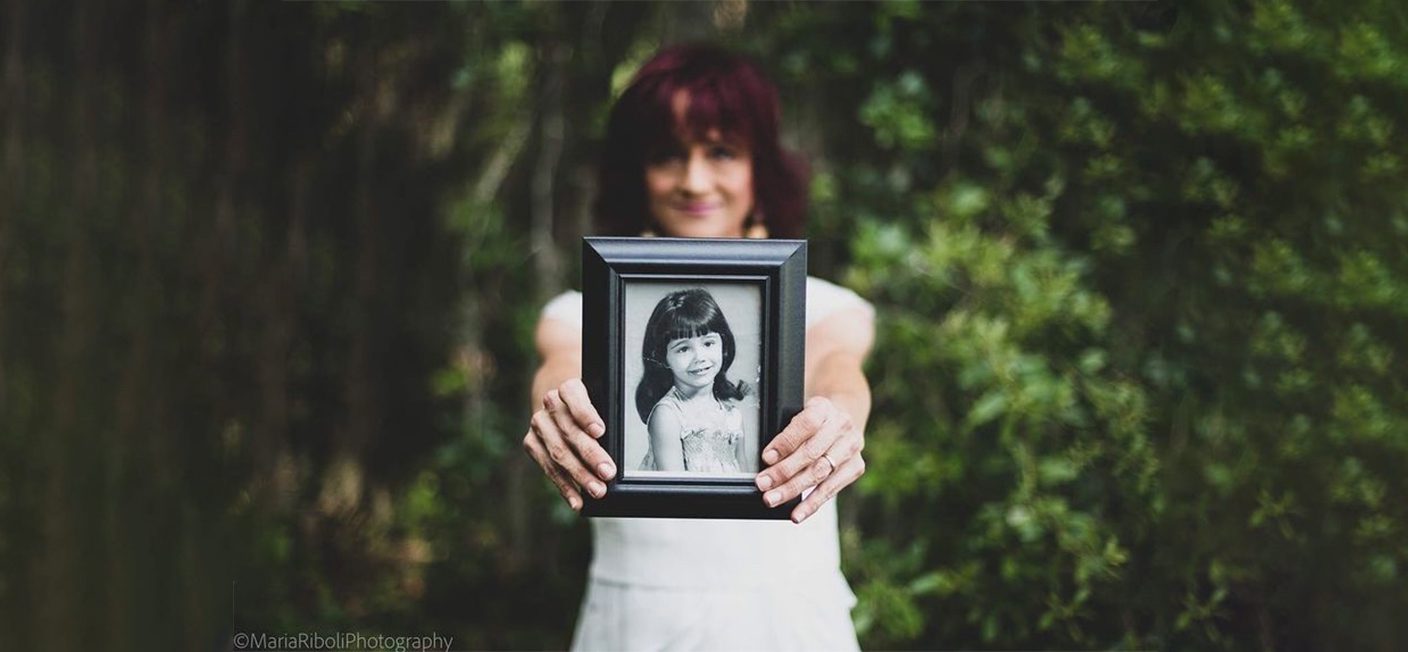Last Updated on October 6, 2021
Photo courtesy of Maria Riboli Photography
This article contains descriptions of attempted suicide. Reader discretion is advised. National Suicide Prevention Week begins Sept. 5. See the bottom of this story for resources.
Central Florida resident Naome Bradshaw says she attempted suicide more than once. She said the first time she wanted to die was before she turned 10. Another time she was barely 20 and estranged from her family.
Now at the age of 55, Bradshaw is on the road to recovery. She shared her struggles with mental illness in the hopes of helping others who may grapple with suicide.
“I learned in therapy that childhood trauma often doesn’t present itself until after the age of 40,” Bradshaw said. “People repress things as they go through life while they’re busy with their family and career. Then they get to a time of life where things are going well and their brain says, ‘OK, now I can dump all this pain and expose all the trauma in my past’.”
Childhood trauma
Bradshaw told Growing Bolder her life was riddled with pain from the start. She said several close family members suffered from mental illness, including bipolar disorder. She shared that she was neglected and physically abused, and at the age of 4 was raped by a man who lived nearby.
Bradshaw said her parents didn’t recognize the signs of sexual abuse. She acted out in ways her family didn’t understand, and she was punished for it.
“I don’t blame them,” Bradshaw said. “They were fighting demons of their own. I was punished for being bad and started thinking of ways to kill myself.”
Bradshaw remembered sitting in her bedroom at the age of 7 whittling down pencils so she could swallow the lead.
“I had heard lead was poisonous,” she said. “After I ate the lead, I laid down in my bed, said my prayers, and waited to die.”
When she woke up the next morning, Bradshaw remembered feeling surprised she was still alive. But she said she was not ready to give up her attempt at suicide. She had heard someone say mushrooms were poisonous.
“I found a few mushrooms in my backyard so I chewed and swallowed them,” Bradshaw recalled about her next failed attempt.
Teenage trauma
Throughout her teen years, Bradshaw bounced between foster homes and living on the streets. She had strangers for family members and trauma she didn’t know how to process.
Bradshaw doesn’t remember exactly why she stopped trying to kill herself, but her life of poverty, childhood wounds and abuse, alcoholism, and mental illness continued to mold her future self. She turned to self-medicating with drugs, alcohol and sex.
Adult trauma
Bradshaw reflected on the time her car broke down at the age of 20 and she walked into a hotel for help. She said she happened upon the graduation party of her younger brother whom she hadn’t seen since she was 13.
“I ran up to him and said hello,” Bradshaw said. “He yelled, ‘You’re not my sister!’ and ran away from me.”
Bradshaw explained that her brother was merely responding to false stories their father had told him for years about his estranged sister.
Bradshaw disclosed that she wandered out of the hotel and onto the busy road. It was dark, and she was walking next to her husband at the time. She stopped and looked at the oncoming traffic.
“I took one step from the curb towards the line of cars,” Bradshaw said. “My ex-husband grabbed my arm and pulled me back.”
That was the closest Bradshaw came to committing suicide intentionally as an adult.
‘I didn’t want to die. I just wanted the pain to end.’
Bradshaw noted that she loved the people in her life and didn’t want to disappoint them by leaving.
“I just wanted the pain to end,” she said. “I think that is why most people end their lives. It’s not that they really want to die, but they are in so much pain. It seems like the best way to end the pain in that moment.”
Bradshaw believes drinking as much as she did for 30 years was another way of committing “slow suicide.”
Recovery
It wasn’t until she turned 50 in 2017 that Bradshaw began therapy after her diagnosis of complex Post Traumatic Stress Disorder due to childhood trauma. She began a rigorous regiment of Eye Movement Desensitization and Reprocessing therapy that is used to relieve psychological stress in people with emotional distress resulting from disturbing life experiences.
Two years later, Bradshaw stopped drinking alcohol and continued on a path toward personal healing. Now she hopes her journey can help others.
“My dream is that people can feel accepted and loved,” Bradshaw said. “If you’re untreated, you don’t feel like you’re worth it. You have to reach out and ask for help. It may not be easy. It might be a battle. But it will be the best battle of your life. It was for me.”
If you, or someone you know, is struggling with thoughts of suicide, please reach out for help:
National Suicide Prevention Hotline: 1-800-273-8255
National Suicide Prevention Lifeline: https://suicidepreventionlifeline.org/
New Directions Behavioral Health: https://suicidepreventionlifeline.org/ 1-866-287-9569 TTY 1-800-955-8770















